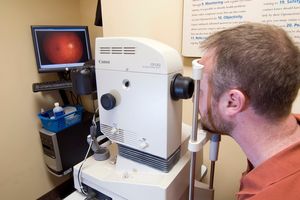With healthcare information changing daily amidst the COVID-19 pandemic, little attention has been given to the virus’ effect on one of the most sensitive parts of our bodies — our eyes.
Here are the answers to the six most commonly asked questions:
Q: If COVID-19 droplets land in your eye, can you get infected?
A: The evidence of ocular transmission of the COVID virus has not been well studied.
However, mucous membranes, which line many body cavities and organs including the respiratory tract, are most susceptible to the coronavirus and viruses in general.
The surface of the eye and inner eyelids are also lined by a mucous membrane called the conjunctiva.
Therefore, if COVID infected droplets land in your eye, you may be susceptible to infection— but this only happens in very rare cases.
The primary method of COVID-19 transmission is still believed to be through respiratory droplets from person-to-person. However, the virus can also live on surfaces for up to a few days. Therefore, touching an infected surface, then touching your eyes, nose or mouth without washing your hands may lead to infection.
Q: Does cleaning your eyes with water or over the counter eye drops decrease your risk of COVID-19 infection?
A: The ocular surface of the eyes has its own protective mechanisms, including antimicrobial proteins and natural lubrication in the tears.
Therefore, routine cleaning or flushing of the eyes with water is not necessary and may actually strip away some of the ocular surface’s natural protective barriers, leading to an increased risk of infection.
If your eyes become irritated or red, using over-the-counter artificial tears may help alleviate your symptoms, but most likely will not reduce the chances of possible infection.
If symptoms are persistent, you should contact an eye care provider near you.
SEE RELATED: COVID-19 and the Eyes: What Do the Numbers Say?
Q: Do contact lens wearers have a higher risk of COVID-19 infection?
A: As long as you practice proper hygiene, there is no evidence that suggests that wearing contact lenses increases your risk of COVID-19.
However, contact lens wearers do touch their eyes more often than the average person. If you have a tendency to touch or rub your eyes, it may be best to switch to glasses temporarily, given the risk of transmission from rubbing your eyes without proper hand hygiene.
Wearing eyeglasses minimizes the risk of irritation from contact lens wear and also serves as a barrier that forces you to pause before touching your eyes.
Glasses can also serve as a partial shield from respiratory droplets.
If you do continue contact lens wear, make sure you carefully adhere to contact lens hygiene and wash your hands before inserting and removing your lenses. If you develop redness or irritation, discontinue contact lens wear and contact an eye doctor.
Q: Is it true that pink eyes are an early sign of COVID-19?
A: Pink eye (conjunctivitis) has been reported to be a possible sign of infection from COVID-19, but the evidence is not clear yet.
It is still uncertain exactly what percentage of patients with COVID-19 have conjunctivitis as different sources are reporting varying numbers.
Although a recent study in JAMA Ophthalmology reported up to one-third of patients hospitalized with COVID-19 had ocular abnormalities, additional studies are still needed.
Q: Can COVID-19 cause temporary or permanent damage to your eyes?
A: Although conjunctivitis has been linked to COVID-19, at this point, permanent eye damage from COVID-19 has not been reported.
If a patient has difficulty breathing long enough, theoretically, poor oxygen flow could lead to possible damage to the optic nerve or retina—but this has yet to be reported in COVID-19 related cases. In this instance, eye damage would be caused by decreased oxygen, rather than the virus itself.
Q: Can COVID-19 be transmitted through tear droplets?
A: Reports of transmission through infected ocular tissue or fluid have been controversial. The novel coronavirus has been detected in tear samples, though only in a small number of cases.
Given the presence of viral particles in your tears, it is possible to transmit COVID-19 through tear droplets, although the risk is very low and additional studies on this are required.
It is important to state that the COVID-19 situation is always evolving and more information about the virus is uncovered every day.
Contact your primary care physician if you are experiencing symptoms of COVID-19.
LEARN MORE: Guide to Eye Conditions
If you have irritation or pain in the eye or difficulty seeing, please reach out to an eye care provider.








